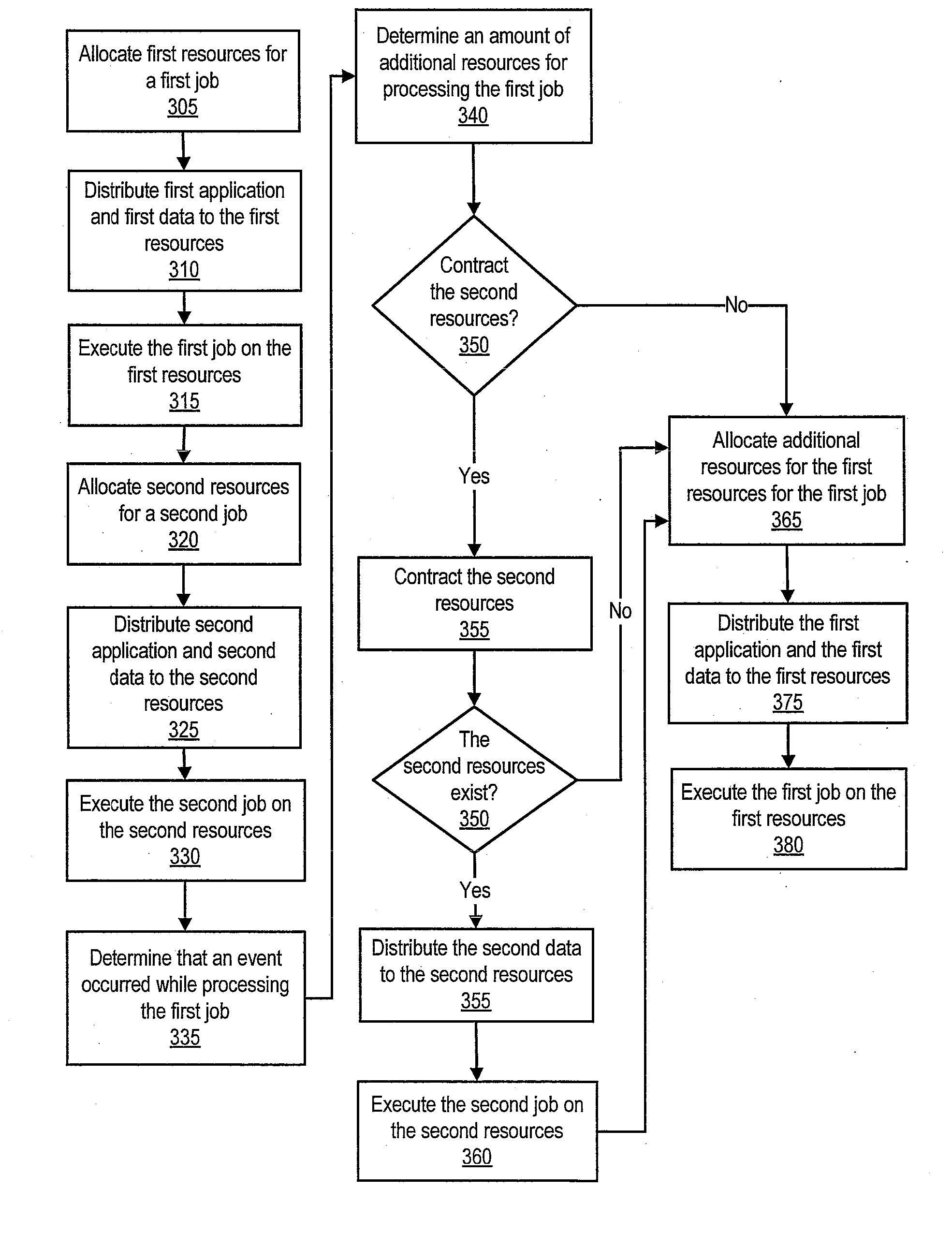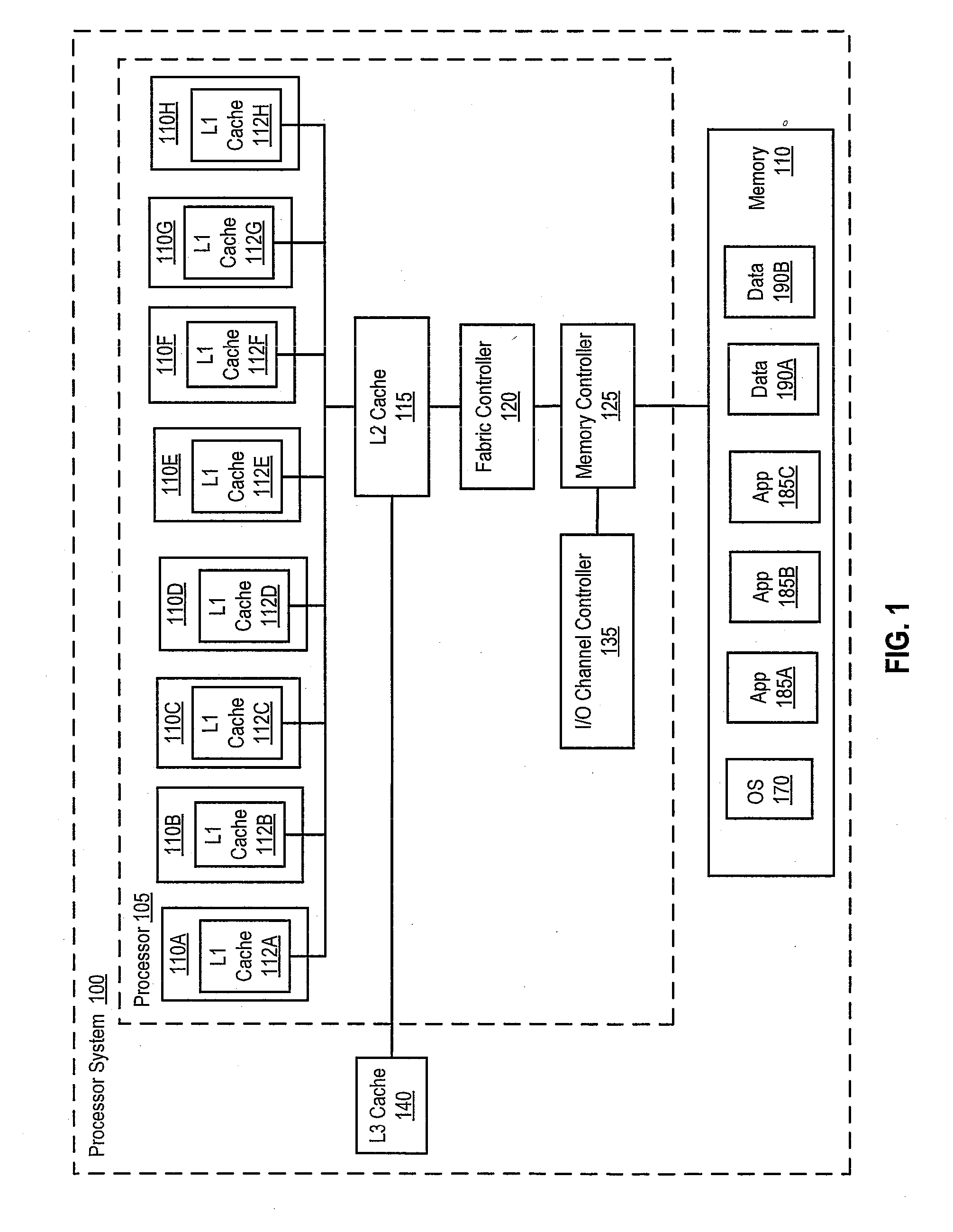Event-based dynamic resource provisioning
- Summary
- Abstract
- Description
- Claims
- Application Information
AI Technical Summary
Benefits of technology
Problems solved by technology
Method used
Image
Examples
Embodiment Construction
[0015]Disclosed are a method, a system and a computer program product for automatically allocating and de-allocating resources for jobs executed or processed by one or more supercomputer systems. In one or more embodiments, a supercomputing system can process a first supercomputing job with a first amount of resources of the supercomputing system. For example, the first supercomputing job can process data with a first resolution or fidelity. The first supercomputing job can detect and / or determine at least one portion of the data that meets a state or an approximate state and transmit a message to a global resource manager that an event has been triggered. The global resource manager can determine that a first event occurred and can determine that a higher resolution in analyzing the data that triggered the event is to be utilized. In one or more embodiments, performing a higher resolution analysis of the data can increase an amount of time in processing all of the data. For example...
PUM
 Login to View More
Login to View More Abstract
Description
Claims
Application Information
 Login to View More
Login to View More - R&D
- Intellectual Property
- Life Sciences
- Materials
- Tech Scout
- Unparalleled Data Quality
- Higher Quality Content
- 60% Fewer Hallucinations
Browse by: Latest US Patents, China's latest patents, Technical Efficacy Thesaurus, Application Domain, Technology Topic, Popular Technical Reports.
© 2025 PatSnap. All rights reserved.Legal|Privacy policy|Modern Slavery Act Transparency Statement|Sitemap|About US| Contact US: help@patsnap.com



